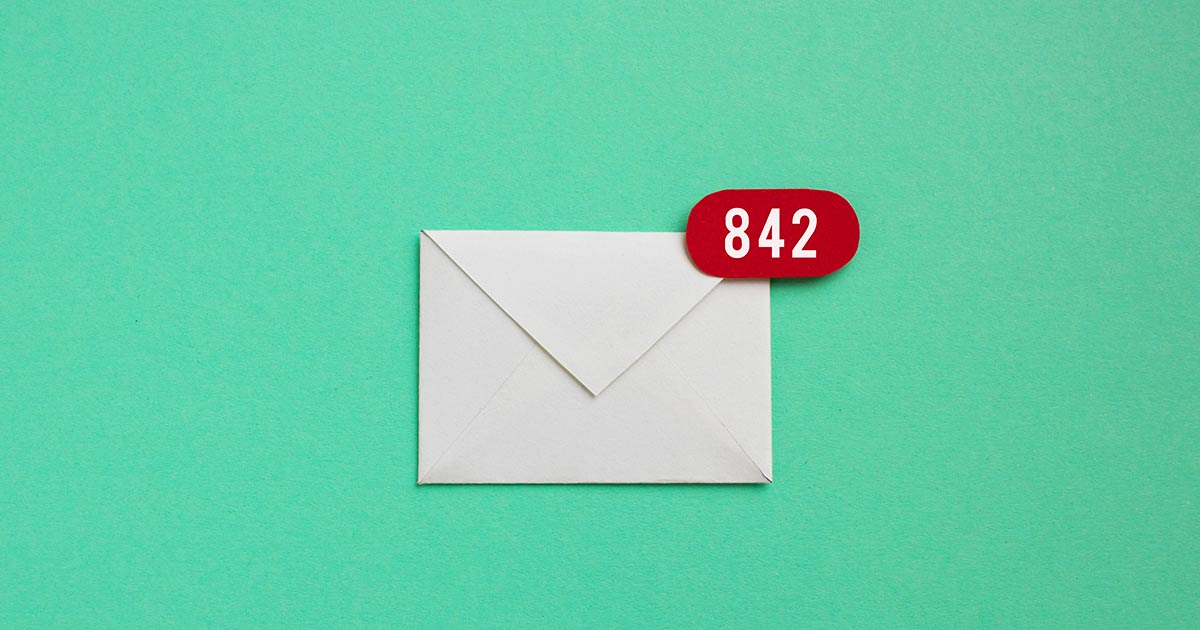
If I handed you my phone right now, this is what you’d see in my bottom toolbar:

Yes, I have more than 46,000 unread emails.😱 And that number is growing every day.
A long time ago, I had shame having a ridiculous number of unopened emails in my inbox. Today, however, just like many people, having thousands of unread emails no longer gives me panic or stress. It’s normal. 🤷♂️ A fact of life.
In fact, not reading emails is probably best for my sanity: if I were to read every single message that comes to my inbox, I’d have no time to do anything else.
Admittedly, my big inbox mess is a problem of my own doing. I am subscribed to too many newsletters. I could also be more diligent about managing my email subscriptions with different apps and social networks.
That said, what I’d like to highlight here is that email overload is a big and very real problem. The reality is that I am not alone in ignoring my emails.
To truly understand the sad state of affairs for emails, consider these stats:
✔️ As of 2019, more than 246 billion emails are sent and received every day
✔️ According to a study from GetResponse, the average open rate for emails sent by businesses is 22.86%—meaning more than three quarters of emails aren’t opened
✔️ The same study found that average click-through rate for emails sent by companies is 3.71%
✔️ 74% of consumers said they are overwhelmed by email overload, according to a 2017 survey
✔️ 57% of consumers said they find marketing emails “rarely” or “never” useful
Think about the last time you received a survey. How did you get it? Most likely through an email invitation.
Email is the predominant and default way market researchers reach respondents today. A few decades ago—when inboxes weren’t full of unread messages—this was a fine solution. But as email fatigue becomes a bigger issue, the market research industry needs to find better and more effective ways of reaching customers for insights.
Email is the predominant and default way market researchers reach respondents today.
If you really think about it, declining response rates is probably related to email overload—if your customers don't see your email invitations to begin with, how can they complete your survey? 😉
To address the email overload issue, many smart researchers are trying to improve email subject lines and to optimize when they send out emails. These are smart steps to take, but I don’t think they are enough given how much people hate emails.
A better and more impactful solution is to go where your customers are going. Marketers are already realized this—as a recent Digiday article points out, many marketers are now investing in reaching customers through messaging platforms (such as Facebook Messenger) because this is where consumers are spending a lot of their time.
Many marketers are now investing in reaching customers through messaging platforms.
The power of messaging platforms lies in the fact that, unlike emails, they are mobile-first. Most consumers don't have mobile notifications for emails, but have notifications set up for SMS and Facebook Messenger. Even if they turn on notifications for emails, most consumers are not in the habit of responding to emails right away. On the other hand, there's an expectation for faster responses for messages sent via texts and Messenger.
Researchers should follow the lead of marketers and consider using messaging platforms to reach customers. At Rival Technologies, this is something we’re trying to solve by providing a platform that lets companies send chat surveys (or “chats”) via SMS and Facebook Messenger.
Based on our experience working with clients, however, one thing that has become clear is that successfully engaging customers via messaging platforms requires a rethinking of the survey experience. You can’t just copy your online survey and paste it into a chat. You have to consider the length of your chat, when you’re sending it, and how you’re using images, GIFs and emojis to make the experience truly conversational.
👉 Check out our ebook, Create Effective Chat Surveys, for more tips. 👈
Email is unlikely to do die soon. After all, practically all apps and websites require an email address to sign up. At work, emails are still essential for survival. Messaging apps like Slack have penetrated work, but they haven’t made email completely obsolete yet.
While email is here to stay though, as I outlined above, fatigue is a real big problem. It’s an issue that market researchers should openly talk about more. And that conversation should start now because the insights industry’s long-term survival likely depends on it.

No Comments Yet
Let us know what you think